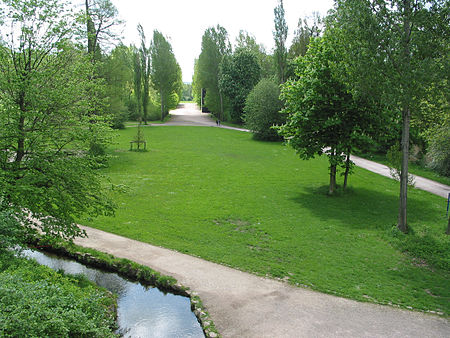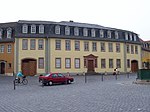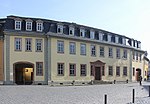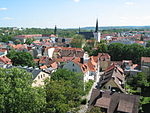Park an der Ilm
Classical Weimar World Heritage SiteParks in ThuringiaProtected areas of ThuringiaWeimar

The Park an der Ilm (Park on the Ilm, short Ilmpark) is a large Landschaftspark (landscaped park) in Weimar, Thuringia. It was created in the 18th century, influenced by Johann Wolfgang von Goethe, and has not been changed much, preserving a park of the period. It forms part of the World Heritage Site "Classical Weimar along with other sites across Weimar bearing testimony to the city's historical importance as a cultural hub during the Weimar Classicism movement in the late 18th and 19th centuries".
Excerpt from the Wikipedia article Park an der Ilm (License: CC BY-SA 3.0, Authors, Images).Park an der Ilm
Duxbrücke,
Geographical coordinates (GPS) Address Nearby Places Show on map
Geographical coordinates (GPS)
| Latitude | Longitude |
|---|---|
| N 50.973055555556 ° | E 11.336388888889 ° |
Address
Duxbrücke
Duxbrücke
99425 , Parkvorstadt
Thuringia, Germany
Open on Google Maps











